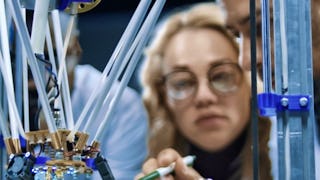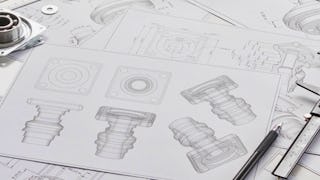Hello, everyone! Welcome to this course on Rapid Prototyping Materials and Tooling. This is part of the Rapid Prototyping and Tooling specialization. In this course, I’ll cover the characteristics and appropriate uses of a variety of prototyping materials, including cardboard, plastic, wood, and aluminum. I’ll also cover some of the common forms of traditional machining used in making prototypes, as well as more advanced manufacturing tools such as 3D printers, laser cutters, and more!

Unlock access to 10,000+ courses with Coursera Plus. Start 7-Day free trial.


Rapid Prototyping Materials and Tooling
This course is part of Rapid Prototyping and Tooling Specialization

Instructor: Daniel Frank
Included with
(22 reviews)
Recommended experience
What you'll learn
You will understand the strengths and weaknesses of common materials and tooling used for rapid prototyping and situations for when to use each one.
Skills you'll gain
Details to know

Add to your LinkedIn profile
See how employees at top companies are mastering in-demand skills

Build your subject-matter expertise
- Learn new concepts from industry experts
- Gain a foundational understanding of a subject or tool
- Develop job-relevant skills with hands-on projects
- Earn a shareable career certificate

There are 4 modules in this course
Hello, everyone! Welcome to this course on Rapid Prototyping Materials and Tooling. This is part of the Rapid Prototyping and Tooling specialization. In this course, I’ll cover the characteristics and appropriate uses of a variety of prototyping materials, including cardboard, plastic, wood, and aluminum. I’ll also cover some of the common forms of traditional machining used in making prototypes, as well as more advanced manufacturing tools such as 3D printers, laser cutters, and more! By the end of this course, you should have a better understanding of the strengths and weaknesses of common prototyping materials and manufacturing processes, as well as the situations in which their use is most appropriate. The hope is that by having a better understanding of these materials and machines, you will be able to better develop high-quality prototypes. There's a lot of really exciting content to cover in this course, so without further ado, let’s dive into the world of rapid prototyping!
What's included
3 videos2 readings
In this module, you will learn about basic material properties such as density, toughness, and strength. You will also learn about the different characteristics of common prototyping materials like cardboard, plastics, wood, and aluminum.
What's included
5 videos2 assignments
In this module, you will learn about the different types of traditional machining tools that are useful for making prototypes, such as the hack saw, bandsaw, chop saw, hack saw, drill press, lathe, and mill.
What's included
1 video2 assignments
In this module, you will learn about many different CNC machines that can be used to fabricate prototypes. In particular, this module will go into detail about the considerations and choices an engineer needs to make when making a part with a 3D printer or a laser cutter.
What's included
3 videos10 readings3 assignments1 peer review
Earn a career certificate
Add this credential to your LinkedIn profile, resume, or CV. Share it on social media and in your performance review.
Instructor

Offered by
Explore more from Mechanical Engineering
 Status: Free Trial
Status: Free TrialArizona State University
 Status: Free Trial
Status: Free TrialArizona State University
 Status: Free Trial
Status: Free TrialArizona State University
 Status: Free Trial
Status: Free TrialArizona State University
Why people choose Coursera for their career





Open new doors with Coursera Plus
Unlimited access to 10,000+ world-class courses, hands-on projects, and job-ready certificate programs - all included in your subscription
Advance your career with an online degree
Earn a degree from world-class universities - 100% online
Join over 3,400 global companies that choose Coursera for Business
Upskill your employees to excel in the digital economy
Frequently asked questions
To access the course materials, assignments and to earn a Certificate, you will need to purchase the Certificate experience when you enroll in a course. You can try a Free Trial instead, or apply for Financial Aid. The course may offer 'Full Course, No Certificate' instead. This option lets you see all course materials, submit required assessments, and get a final grade. This also means that you will not be able to purchase a Certificate experience.
When you enroll in the course, you get access to all of the courses in the Specialization, and you earn a certificate when you complete the work. Your electronic Certificate will be added to your Accomplishments page - from there, you can print your Certificate or add it to your LinkedIn profile.
Yes. In select learning programs, you can apply for financial aid or a scholarship if you can’t afford the enrollment fee. If fin aid or scholarship is available for your learning program selection, you’ll find a link to apply on the description page.
More questions
Financial aid available,
¹ Some assignments in this course are AI-graded. For these assignments, your data will be used in accordance with Coursera's Privacy Notice.

